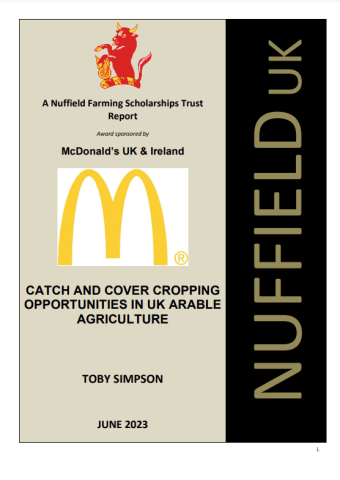Toby Simpson
On many arable farms, modern agricultural production has seen the continual removal of residues and intensive tillage of the soil. In the UK during the post-war period, these soils were depleted of organic matter, requiring more horsepower and artificial inputs to keep producing food. But the tide has changed over the last few years, with farmers and the wider industry focusing on improving soil health. Reduction of tillage, livestock integration, no-till, and cover cropping is far more common now than 20 years ago. Regenerative agriculture has become a fashionable term, though dividing opinions on what it means, whether it’s something new or simply going back to good mixed farming practices of previous generations. As more farmers are incentivised to adopt practices like cover cropping, it’s pertinent to look at the practicalities of this system and explore what wider opportunities arise as a result.
The public and private sectors are looking at farmers to help sequester carbon in soils and reduce agricultural emissions in the fight against climate change. At the same time, farmers face ever more challenging growing conditions with more erratic weather patterns, simultaneously navigating unstable commodity prices and high agricultural inflation.
By improving the function of the soil, farmers can help build resilience against these challenges while creating wider farm business opportunities which can add diverse income streams and generate employment opportunities. This is even more relevant when farmers want to fill the hole that Basic Payment Scheme farm subsidies have left in their income following their removal.
Cover crops are the keystone to the biological, chemical, and physical function of the soil; a living root will physically structure, biologically feed, and chemically alter the soil around it. Cover crops form part of a more extensive system of soil health which farmers must look at in the context of their own soils and climate. Understanding the carbon and nitrogen cycles in the soil will help farmers manage their cover crops, residues, and inputs. While helping increase the soil’s organic matter and associated benefits.
To succeed in the adoption of cover cropping, farmers need to set clear, achievable objectives. These objectives will help when considering the choice of the cover crop's functionality, diversity, and density. The function will inform the species selection, establishment, management, termination, and following crop performance. Cover crop diversity will provide a plethora of above and below-ground residue that will feed a multitude of microbes and help cycle soil nutrients. Plant density will influence the function in several ways, from weed suppression and water management to CO₂ cycling.
When leaving fields empty, we are essentially farming naked; cover crops provide the opportunity to not only add cover but layer the soil with new enterprises and diverse income streams—improving not only public engagement but farm business resilience. All of this should be viewed in the context of a farmer’s own soil, climate, and business, as this will vary significantly, and what works for someone might not always be the solution for all.
Toby's report summary video can be viewed on the Nuffield Farming YouTube Channel.
Download the report below.



